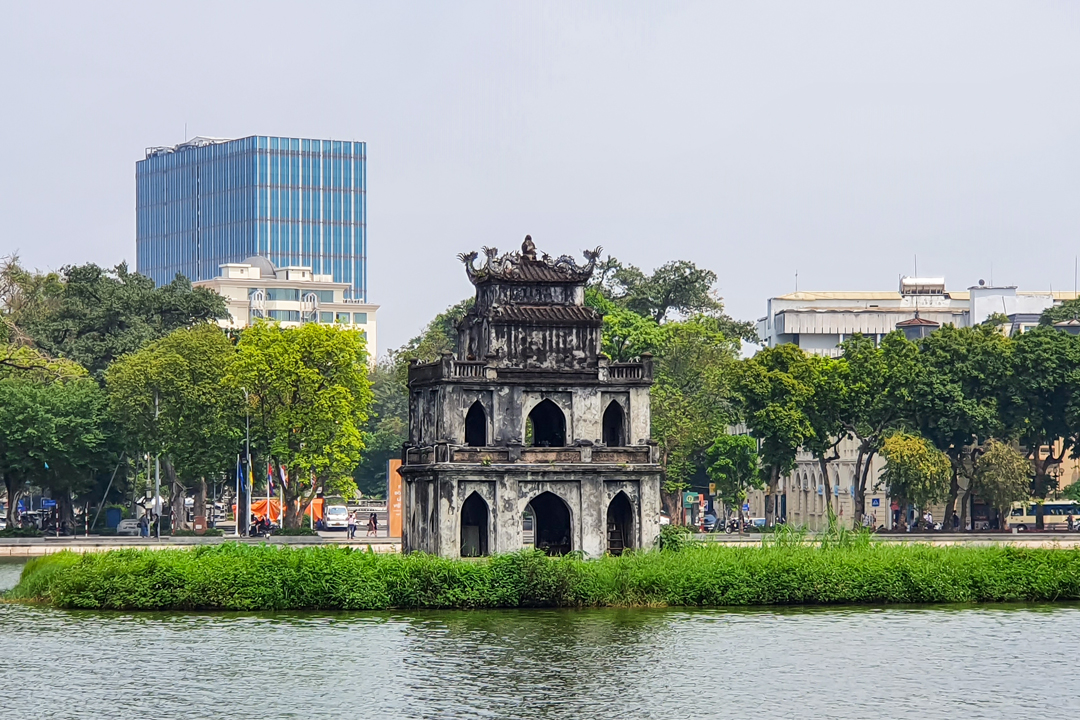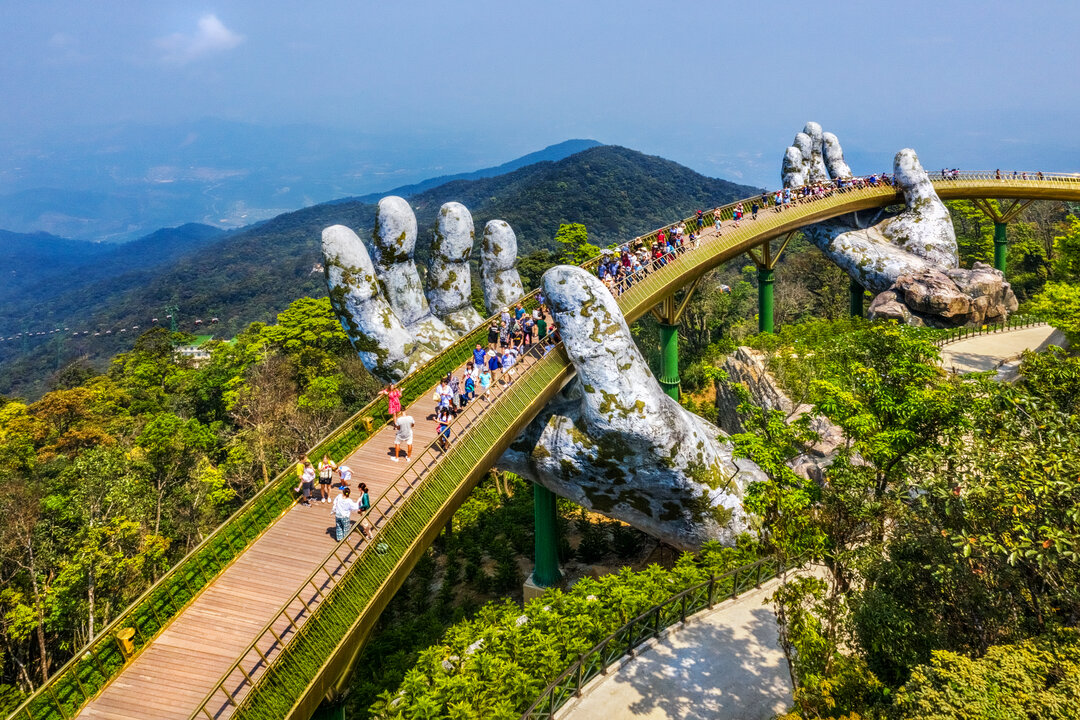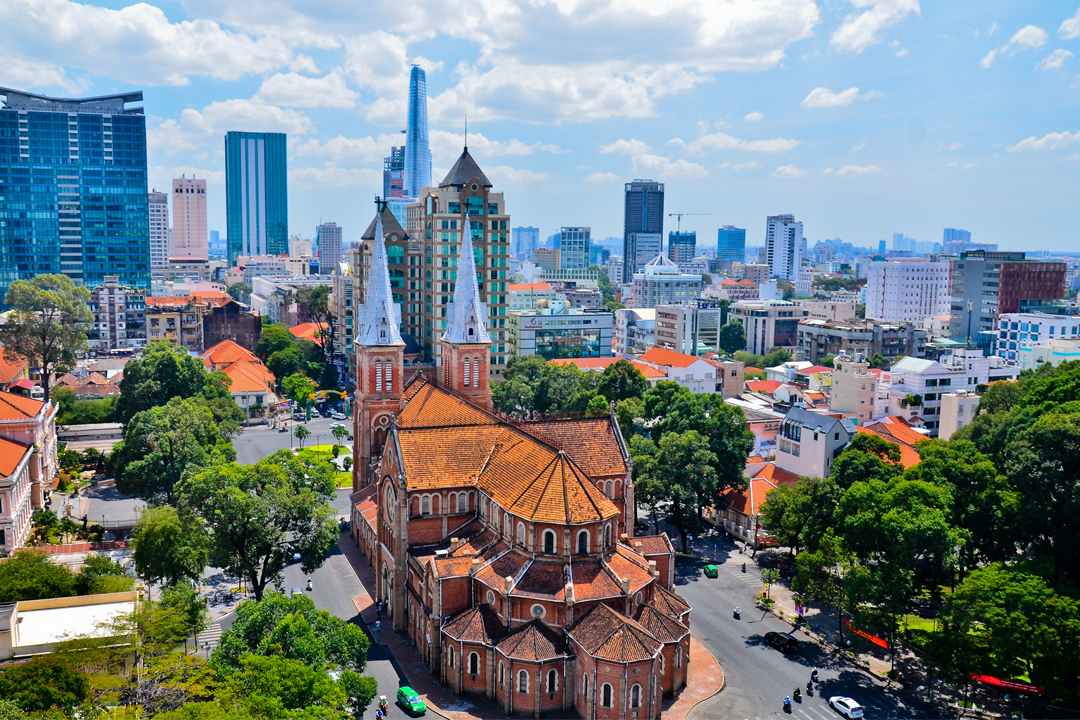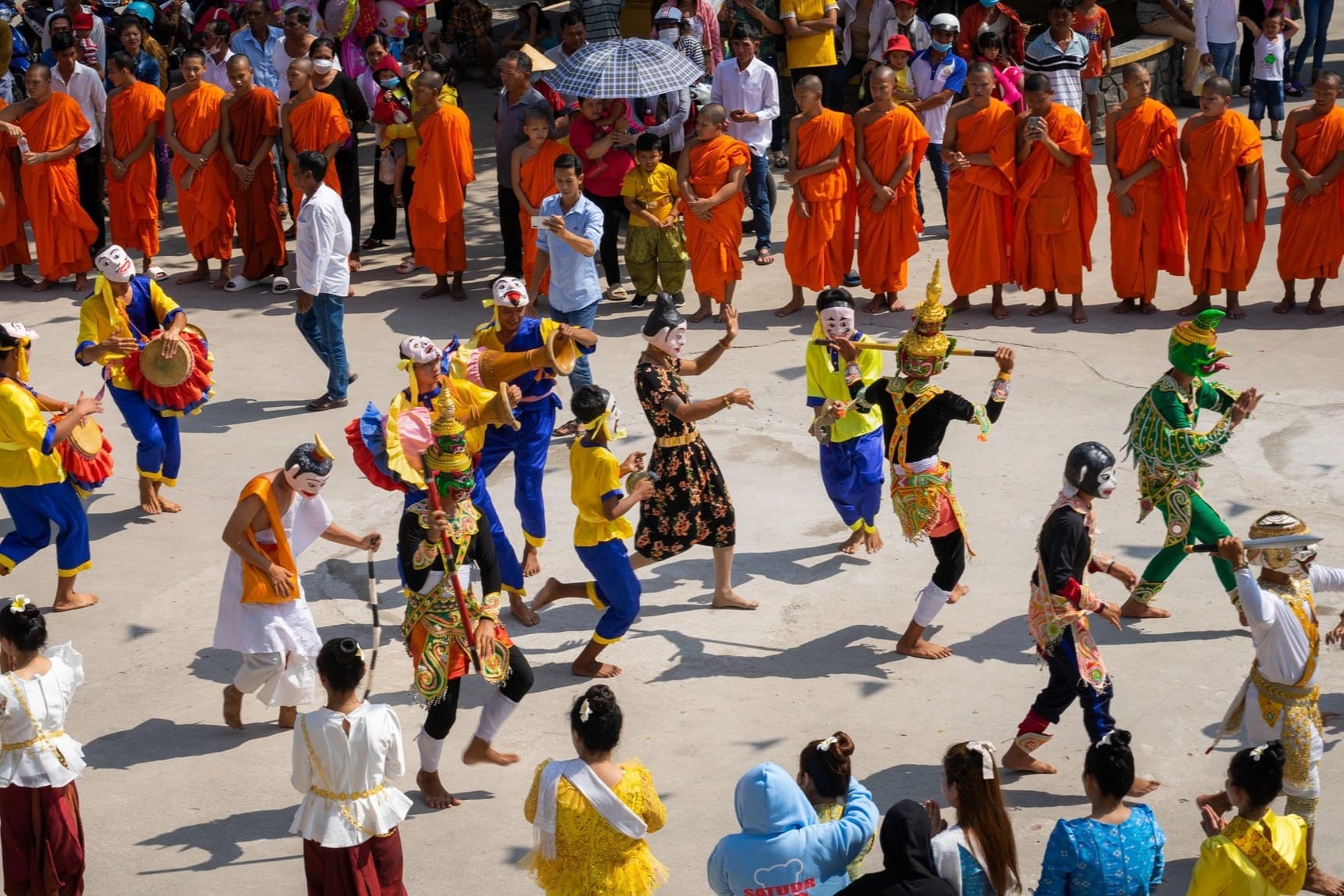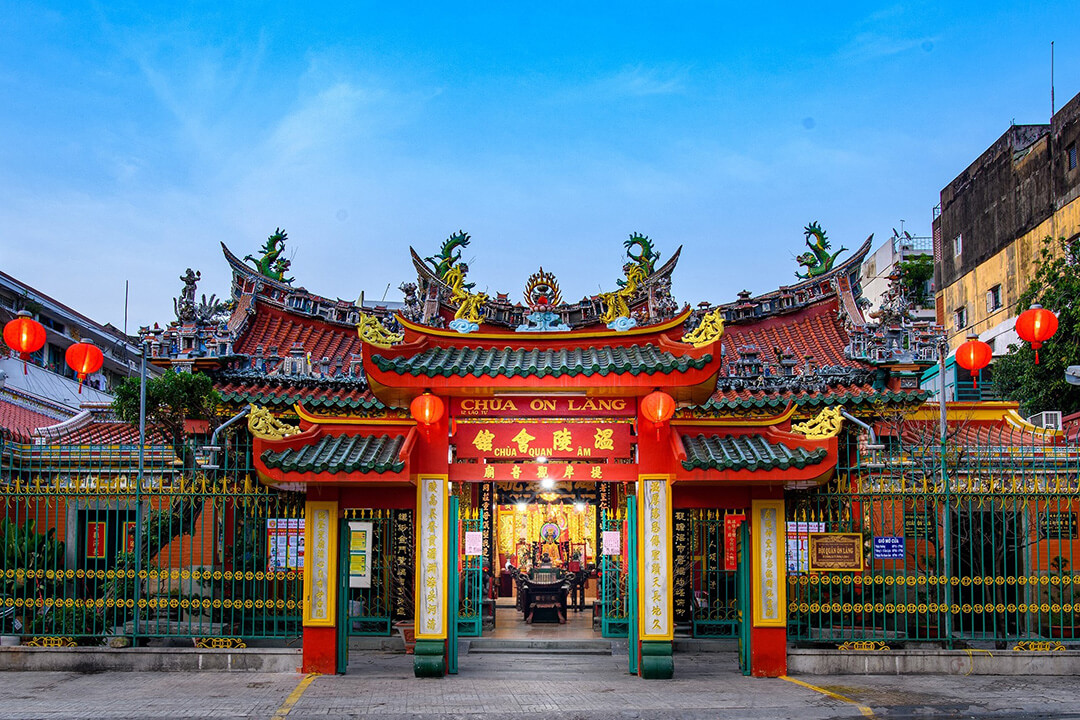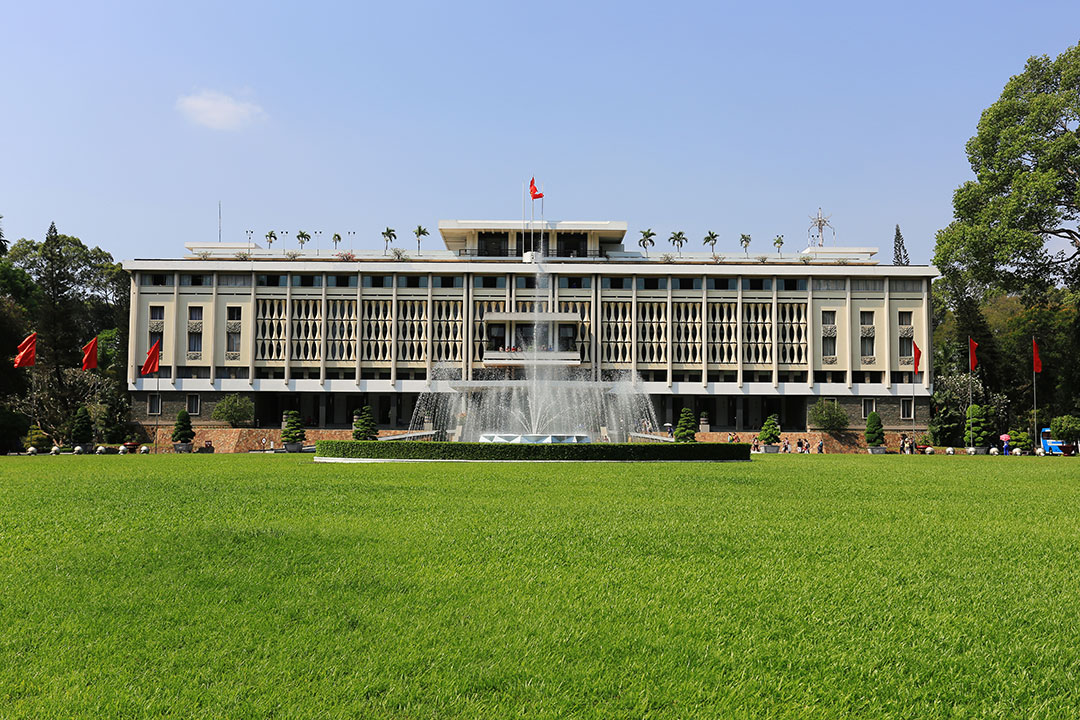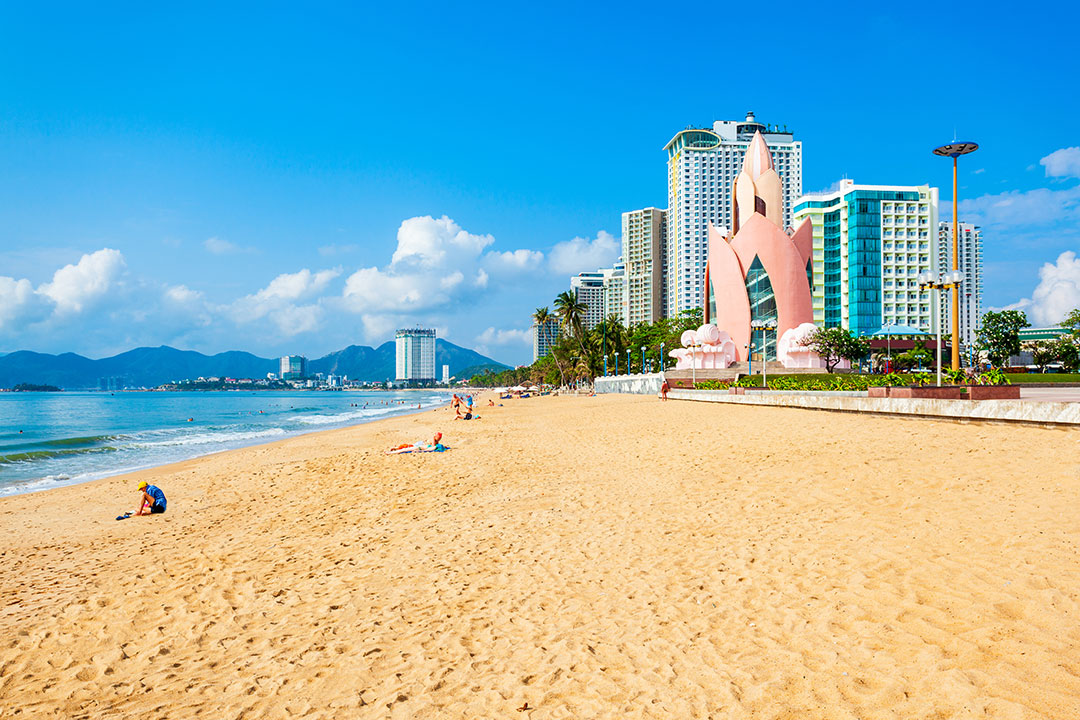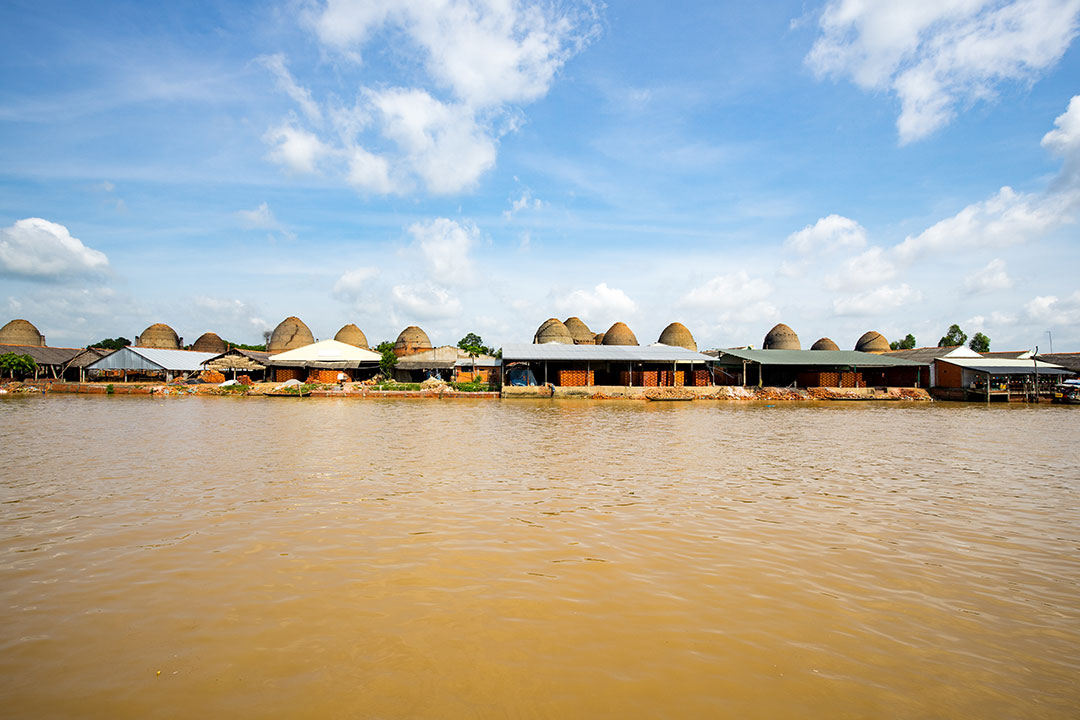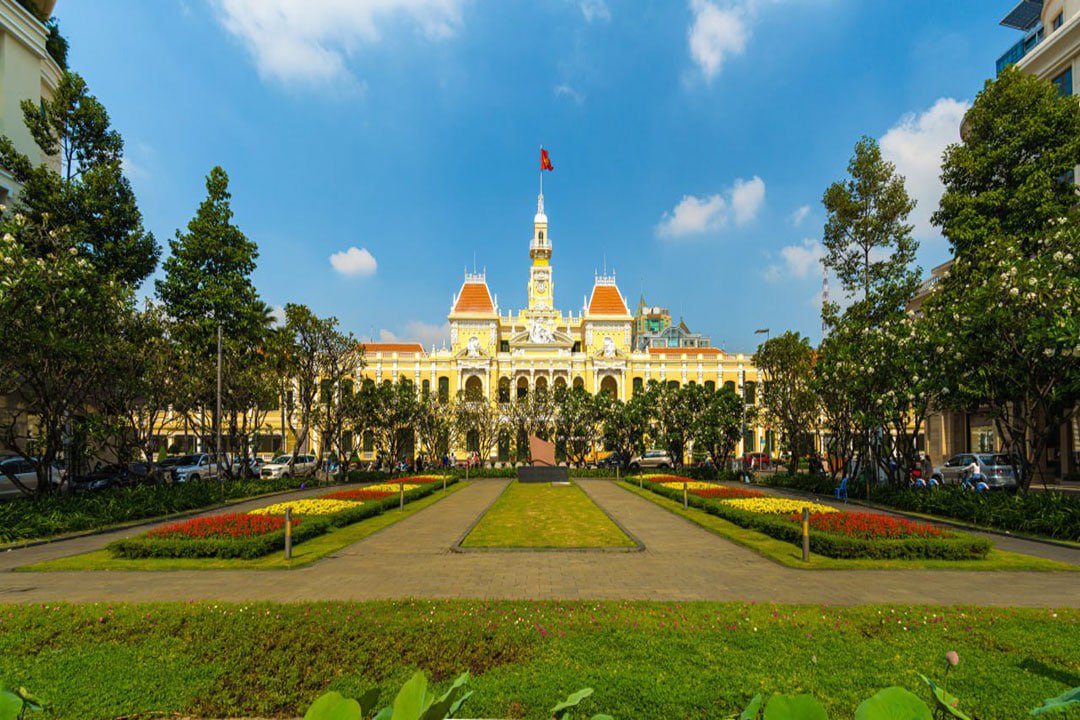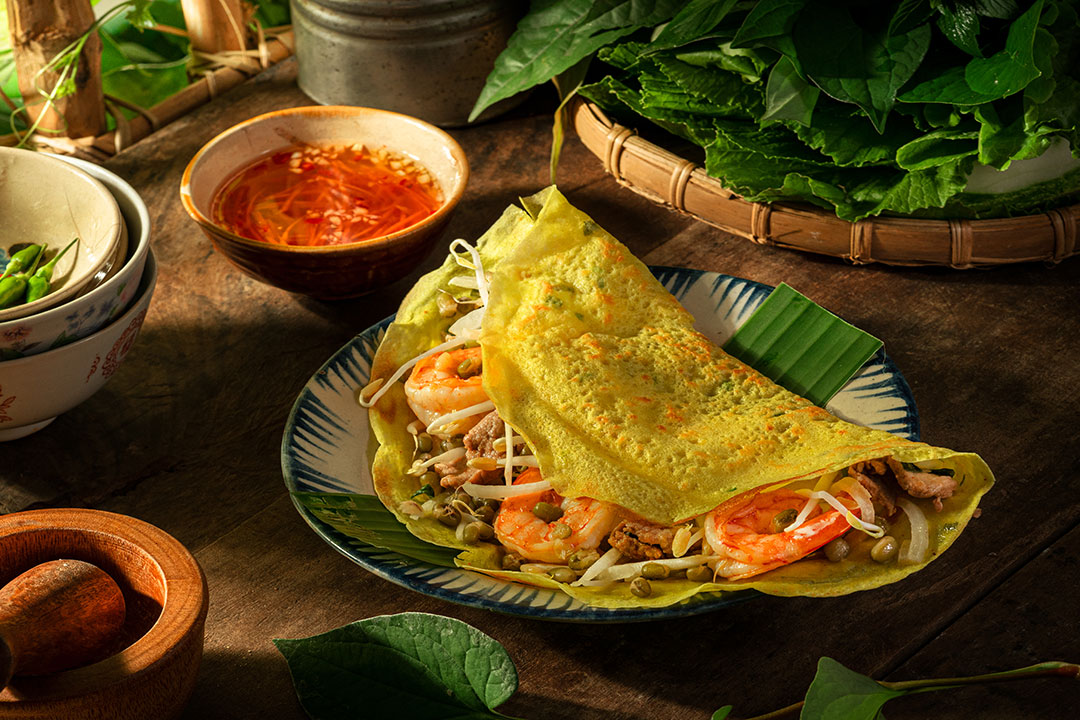Quan Am Pagoda (On Lang Assembly Hall): Explore History, Architecture & Festivals in Ho Chi Minh City
Quan Am Pagoda, formally known as the On Lang Assembly Hall, stands as a vibrant testament to the spiritual and cultural heritage of the historic Cho Lon Area. Tucked away on Lao Tu Street, this over-300-year-old 19th-century marvel stands as a living museum and a cornerstone of the local community. It serves as a portal into the rich traditions of the Fujianese people who settled here generations ago. For the curious traveler, it offers a profound sensory experience, from the swirling incense smoke to the intricate details of its ancient architecture. This GTrip guide is the only resource you'll need to explore its storied history, unique architectural features, revered deities, vibrant festivals, and practical visitor logistics.
An overview of Quan Am Pagoda
- Address: 12 Lao Tu Street, Cho Lon Ward (formerly District 5), Ho Chi Minh City
- Opening hours: 6:15 AM - 5:00 PM daily
- Entrance fee: Free
- Best time to visit: For a quiet and contemplative experience, visit in the early morning when local devotees perform their daily rituals. To witness the pagoda at its most vibrant, plan your trip during major festivals such as the Guan Yin Opens the Treasury Festival. These celebrations offer a full cultural immersion with dragon dances and traditional performances.
Stepping into the Quan Am Pagoda is like entering another world. The air is thick with the scent of burning incense, and the atmosphere is a captivating blend of serene spirituality and lively community activity. Established by the Fujianese community from Quanzhou, China, it serves as both a sacred place to honor key deities and a social hub that preserves cultural identity. Its vivid colors, detailed carvings, and the constant hum of prayer make it one of the most atmospheric and authentic pagodas in Cho Lon.
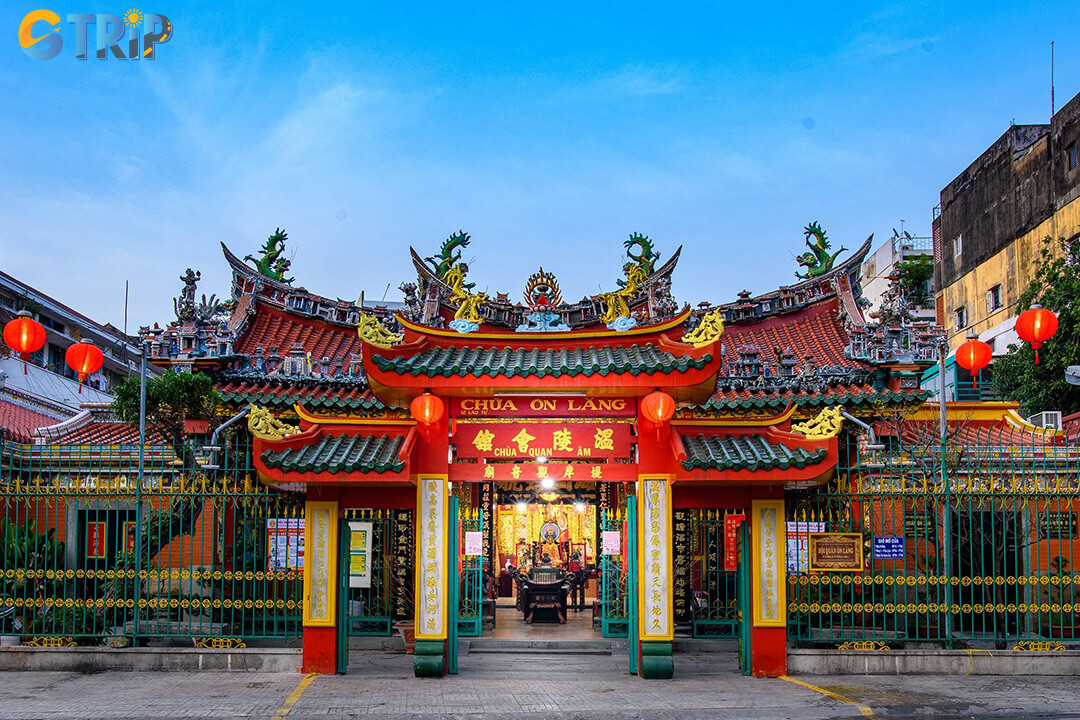
A vibrant Fujianese pagoda in Cho Lon, Quan Am Pagoda blends serene spirituality with rich cultural heritage
History of Quan Am Pagoda
The history of Quan Am Pagoda is deeply intertwined with the story of the Chinese diaspora in Vietnam. The pagoda was founded in the 19th century by immigrants from the Fujian province in China, specifically from the Quanzhou region. They established the On Lang Assembly Hall as a place to worship deities from their homeland and as a crucial community center. It provided a space for social gatherings, mutual support, and the preservation of their unique cultural and linguistic heritage in a new land. The name "On Lang" itself is a transliteration of "Wen Ling", another name for Quanzhou, directly linking the structure to its founders' origins.
Over the centuries, the pagoda has undergone several restorations, most notably in 1866, 1901, 1966, and 1993. Despite these changes, it has carefully preserved its original architectural character and spiritual essence. These restorations were community-led efforts, reflecting the enduring importance of the hall to the Fujianese people. Recognized for its immense cultural and historical value, the On Lang Assembly Hall was designated a National Architectural and Artistic Monument in 1993. Today, it remains one of Ho Chi Minh City’s oldest and most significant Chinese pagodas, linking visitors to the history of Cho Lon and its early settlers.
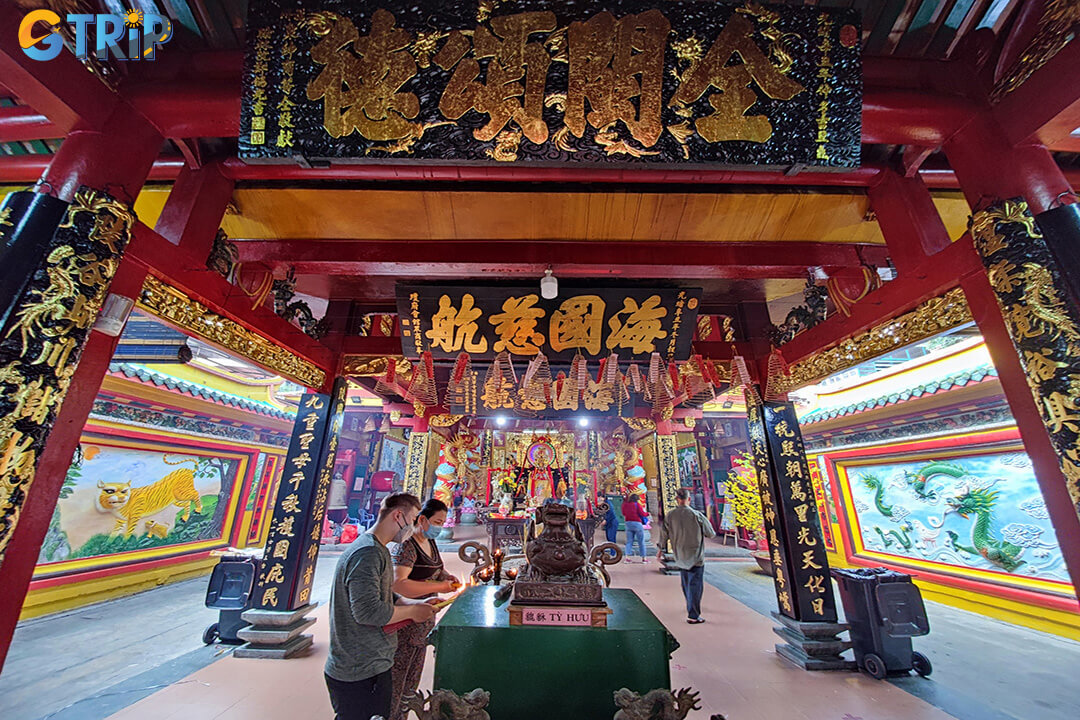
Quan Am Pagoda stands as a historic symbol of the Chinese community’s faith, unity, and cultural heritage in Cho Lon
Architecture of Quan Am Pagoda in Ho Chi Minh City
Quan Am Pagoda, first built in 1740, has stood the test of time through several careful restorations. Designed in classic Chinese architectural style, the pagoda captivates visitors with its red-tiled roofs, white wooden pillars, brick walls, and intricate ornamental details. The complex is divided into three main sections: the front hall, main sanctuary, and rear hall, each serving distinct spiritual purposes.
The front hall honors deities from traditional Chinese folk beliefs, including the Monkey King, Bao Gong, Wen Chang Di Jun, the Eighteen Arhats, and Mother Earth. The main sanctuary is dedicated to Mazu, the guardian goddess of sailors and childbirth, flanked by two smaller shrines to Guanyin Bodhisattva and Amitabha Buddha. In the rear hall, visitors can find altars to other revered figures such as Tai Bai Jin Xing, the Jade Emperor, and Tran Hung Dao, the legendary Vietnamese general. There is also a Five Elements Pavilion, where worshippers pay respects to the goddesses of fertility and creation.
Beyond its architectural beauty, Quan Am Pagoda radiates serenity and spiritual grace. Surrounded by lush greenery and lotus ponds, it offers a peaceful retreat amid the bustle of Ho Chi Minh City. Quan Am Pagoda stands as a living testament to the cultural and spiritual heritage of the Chinese-Vietnamese community, a destination where visitors can pray, reflect, and admire centuries-old craftsmanship.
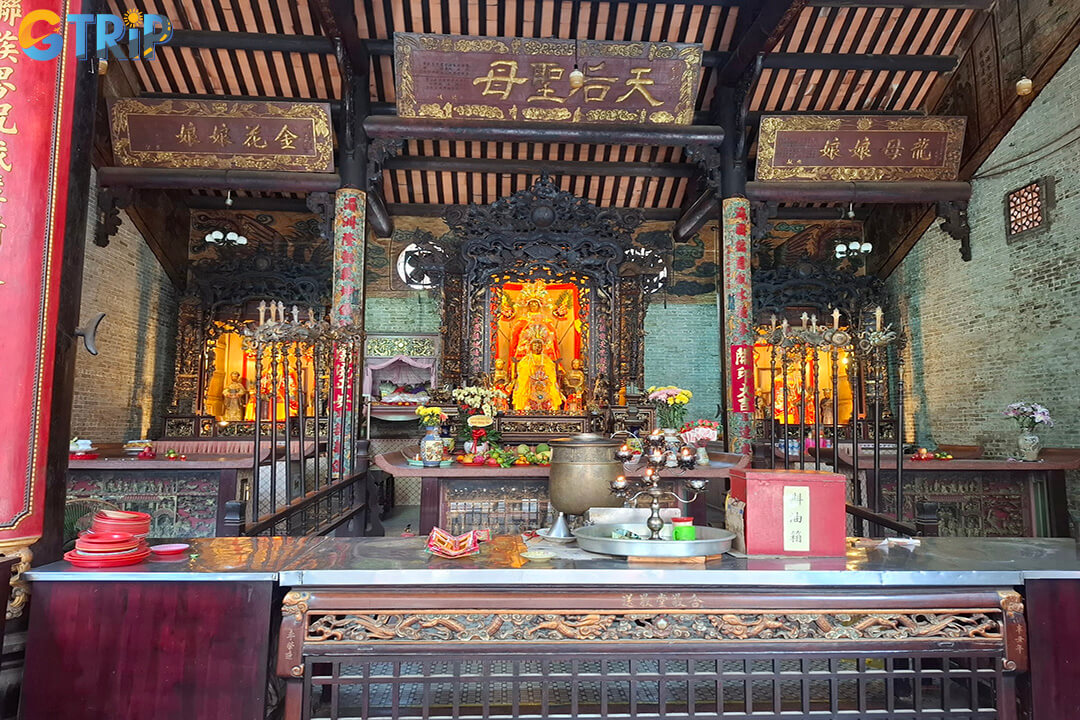
Built in 1740, Quan Am Pagoda blends classic Chinese architecture with deep spiritual heritage, offering a serene haven of Chinese-Vietnamese culture and devotion
Things to do at Quan Am Pagoda
Visiting Quan Am Pagoda is a journey through both faith and culture. Beyond admiring its architecture, you can immerse yourself in the community’s spiritual life, appreciate ancient craftsmanship, and even join in the colorful festivals that bring the temple to life. Here are some meaningful ways to experience the pagoda like a local.
Learn about the deities worshiped
A visit to Quan Am Pagoda offers insight into the blended spiritual traditions of the Chinese-Vietnamese community. The temple honors a diverse pantheon of Buddhist, Taoist, and folk beliefs. At the main altar stands Mazu, the Goddess of the Sea, revered by the seafaring Fujianese, accompanied by her celestial guardians Thuan Phong Nhi and Thien Ly Nhan, who protect travelers across the seas.
Nearby, Ong Bon, the God of the Soil and Wealth, safeguards local prosperity, while Quan Am (Guanyin) is worshiped in the inner sanctum. She is accompanied by the Twelve Midwives, goddesses who bless childbirth and protect children. Visitors come here to pray for health, wealth, safety, and family blessings.
Admire the antiques and decorations
The On Lang Assembly Hall is a treasure trove of history, filled with artefacts that tell the story of the Chinese-Vietnamese community. Inside, visitors can admire centuries-old antiques, including a pair of cast-iron cauldrons and an 1825 Qing Dynasty bell inscribed with details of its creation and patrons.
The pagoda is equally famous for its carved wooden panels bearing gilded Chinese inscriptions that blend art with moral teachings. Above, the intricate roof structure and ceramic mosaics of dragons, phoenixes, and legendary figures showcase the remarkable craftsmanship of 19th-century artisans. Together, they reflect the enduring cultural richness of this sacred place.
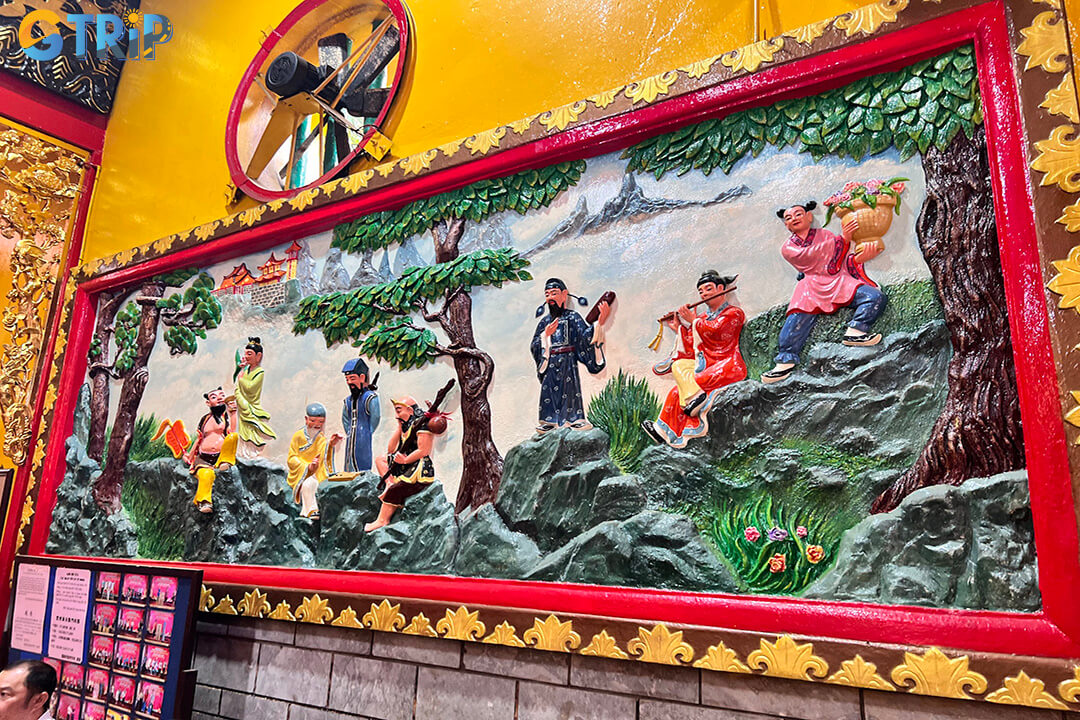
On Lang Assembly Hall preserves centuries-old artifacts, ornate carvings, and exquisite craftsmanship that reflect the legacy of the Chinese-Vietnamese community
Participate in annual festivals
The Quan Am Pagoda comes alive during its annual festivals, offering a vivid glimpse into Chinese-Vietnamese culture. Major celebrations honoring Quan Am take place on the 19th day of the second, sixth, and ninth lunar months, but the highlight is the Guan Yin Opens the Treasury Festival on the 26th day of the first lunar month.
On this day, thousands of devotees gather to seek Guan Yin’s blessings for luck and prosperity. The pagoda buzzes with lion and dragon dances, martial arts performances, and traditional Fujianese music. You can also witness the symbolic ritual of “borrowing” red packets for good fortune, promising to repay them with donations if their wishes are fulfilled. This lively festival offers an unforgettable window into Cho Lon’s living spiritual heritage.
Engage in daily spiritual activities
Beyond its grand festivals, Quan Am Pagoda remains a vibrant center of daily spiritual life. Locals come to light incense, offer flowers and fruit, and pray for peace and protection. These quiet acts of devotion provide a serene contrast to the city’s bustle. One unique ritual here is “villain hitting” (danh tieu nhan), where elderly women strike paper effigies with a shoe to drive away bad luck and evil influences.
During Lunar New Year and the first and fifteenth lunar days, the pagoda fills with worshippers burning joss paper and seeking guidance through kau cim fortune sticks. These are not staged traditions but living rituals, passed down for generations. By observing them respectfully, visitors gain meaningful insight into the enduring spiritual heartbeat of the Cho Lon community.

Quan Am Pagoda offers daily rituals, ancient folk practices, and living traditions that reflect the enduring faith of the Chinese-Vietnamese community
How to get to Quan Am Pagoda in Saigon
Quan Am Pagoda is conveniently located in former District 5, the heart of Ho Chi Minh City's Cho Lon (Chinatown). Reaching it is straightforward:
- By taxi or ride-hailing app (Grab/XanhSM/Be): This is the easiest method. Simply input "Chua Quan Am Quan 5" or "12 Lao Tu Street" into the app. Most drivers are familiar with the location. The ride from former District 1 takes approximately 15-25 minutes, depending on traffic.
- By public bus: Several bus routes service the Cho Lon area. Look for buses heading towards Cho Lon Bus Station, which is a major hub. From there, the pagoda is a short 10-15 minute walk. This is a very affordable option for the adventurous traveler.
- By motorbike: If you are comfortable navigating Saigon's traffic, a motorbike offers the most flexibility. Parking is typically available in designated spaces along the street near the pagoda, though you may need to pay a small fee to a local attendant.
Nearby attractions to Quan Am Pagoda
Exploring Quan Am Pagoda can easily be combined with a visit to other fascinating sites in Cho Lon. Here are a few must-see attractions just a short walk away:
- Binh Tay Market: One of the largest and oldest markets in Ho Chi Minh City, this is a bustling wholesale hub where you can find everything from fabrics and spices to household goods. It’s a fantastic place to witness local commerce in action.
- Thien Hau Pagoda: Another iconic Chinese temple, this pagoda is also dedicated to Mazu, the Goddess of the Sea. It is famous for its breathtaking ceramic dioramas decorating the roof and its massive incense coils hanging from the ceiling.
- Saigon’s ChinaTown: The entire Cho Lon area is a destination in itself. Wander through its streets to discover hidden temples, bustling markets, traditional medicine shops, and some of the best Chinese food in the city.
- Ong Bon Pagoda (Nhi Phu Assembly Hall): Located nearby, this pagoda is also of Fujianese origin and is dedicated to Ong Bon, the God of the Soil. It features stunning architectural details, particularly its elaborate roof and intricate wood carvings.
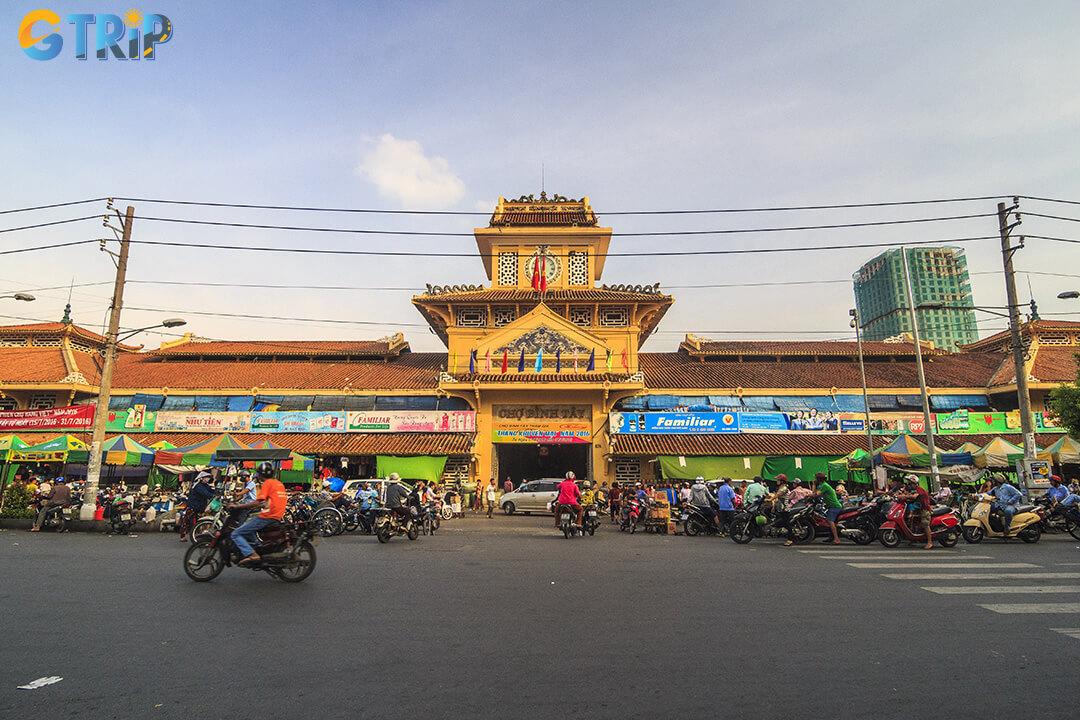
Quan Am Pagoda is surrounded by vibrant cultural landmarks perfect for a rich heritage walk through Saigon’s Chinatown
Practical tips for visiting the On Lang Assembly Hall in Saigon
To ensure a respectful and enjoyable visit to this sacred site, please keep the following tips in mind:
- Dress respectfully: This is an active place of worship. Both men and women should wear clothing that covers their shoulders and knees. Avoid shorts, short skirts, and tank tops.
- Be mindful of worshipers: Remember that people are here to pray. Move quietly, speak in a low voice, and avoid walking in front of people who are in the middle of their devotionals.
- Photography etiquette: Photography is generally permitted, but it is polite to be discreet. Avoid using a flash, especially near the altars, and refrain from taking photos of people praying without their permission.
- Incense and offerings: You can purchase incense at the entrance to make an offering. Follow the lead of locals, placing the sticks in the large sand-filled urns. Do not touch offerings that have already been placed on the altars.
- Navigating the space: Feel free to explore all the main halls. However, be aware that some smaller, private areas may be off-limits to visitors. Always be respectful of signed or implied boundaries.
- No shoes inside: While it's not strictly enforced in the main courtyard, if you see piles of shoes before an inner sanctum, it's a sign to remove your own before entering.
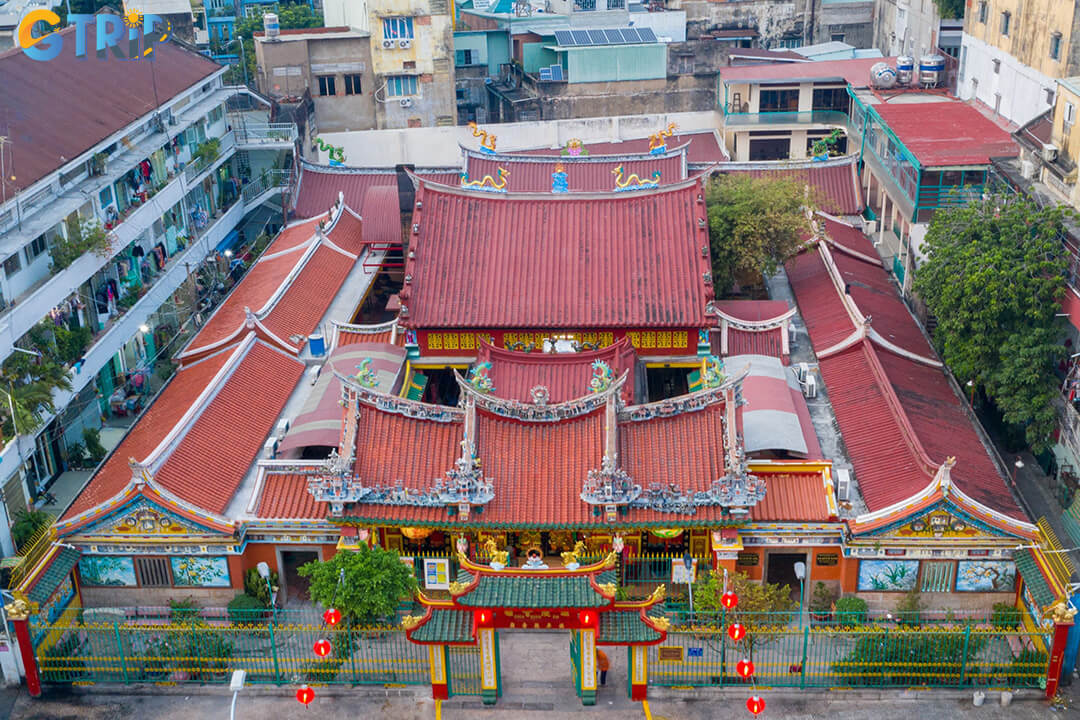
Respect the sanctity of Quan Am Pagoda by dressing modestly, moving quietly, and following local customs when praying, taking photos, or making offerings
Quan Am Pagoda, the On Lang Assembly Hall, is far more than just another stop on a tourist itinerary. It is a vibrant, breathing sanctuary where history, faith, and culture converge. The pagoda, with its dragon-crowned roof and serene inner altars, offers a profound glimpse into the spiritual heart of Cho Lon. It’s a place where you can witness ancient traditions being practiced today, admire centuries-old craftsmanship, and feel the powerful sense of community that has sustained it for generations. As your expert guide, we at GTrip - Vietnam Travel Agency encourage you to step off the beaten path and immerse yourself in the sights, sounds, and scents of this remarkable treasure. A visit here is a journey back in time and a deep dive into the heart of Ho Chi Minh City.

